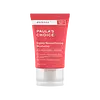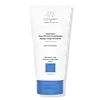What's inside
What's inside
 Key Ingredients
Key Ingredients

No key ingredients
 Benefits
Benefits

 Concerns
Concerns

 Ingredients Side-by-side
Ingredients Side-by-side

Water
Skin ConditioningGlycerin
HumectantEthylhexyl Palmitate
EmollientHydroxyethyl Acrylate/Sodium Acryloyldimethyl Taurate Copolymer
Emulsion StabilisingIsoamyl Laurate
EmollientPrunus Serotina Fruit Extract
MaskingAlmond/Borage/Linseed/Olive Acids/Glycerides
AntioxidantMedicago Sativa Extract
TonicSesamum Indicum Seed
AbrasiveHydrolyzed Eruca Sativa Leaf
AntioxidantSclerocarya Birrea Seed Oil
HumectantHydrolyzed Algae Extract
Skin ConditioningPalmitoyl Hexapeptide-12
Skin ConditioningPalmitoyl Dipeptide-10
Skin ConditioningSodium Hyaluronate
HumectantCeramide Ng
Skin ConditioningHelianthus Annuus Seed Oil
EmollientCocoyl Proline
Skin ConditioningTocopherol
AntioxidantAllantoin
Skin ConditioningTrehalose
HumectantEclipta Prostrata Extract
Skin ConditioningPotassium Azeloyl Diglycinate
Skin ConditioningOpuntia Ficus-Indica Stem Extract
Skin ConditioningMelia Azadirachta Leaf Extract
Skin ConditioningLeuconostoc/Radish Root Ferment Filtrate
AntimicrobialMoringa Oleifera Seed Oil
EmollientAlaria Esculenta Extract
Skin ProtectingAdenosine Phosphate
Skin ConditioningPEG-10 Phytosterol
EmulsifyingTribehenin
EmollientHydrolyzed Vegetable Protein
Skin ConditioningSorbitan Olivate
EmulsifyingSodium Gluconate
Skin ConditioningZinc Gluconate
Skin ConditioningCopper Gluconate
Skin ConditioningMagnesium Aspartate
Skin ConditioningCetearyl Olivate
Isoamyl Cocoate
Caprylic/Capric Triglyceride
MaskingPolyglyceryl-10 Caprylate/Caprate
EmulsifyingMicrocrystalline Cellulose
AbsorbentC12-15 Alkyl Benzoate
AntimicrobialXanthan Gum
EmulsifyingPentylene Glycol
Skin ConditioningButylene Glycol Stearate
EmollientPhenoxyethanol
PreservativePotassium Sorbate
PreservativeEthylhexylglycerin
Skin ConditioningWater, Glycerin, Ethylhexyl Palmitate, Hydroxyethyl Acrylate/Sodium Acryloyldimethyl Taurate Copolymer, Isoamyl Laurate, Prunus Serotina Fruit Extract, Almond/Borage/Linseed/Olive Acids/Glycerides, Medicago Sativa Extract, Sesamum Indicum Seed, Hydrolyzed Eruca Sativa Leaf, Sclerocarya Birrea Seed Oil, Hydrolyzed Algae Extract, Palmitoyl Hexapeptide-12, Palmitoyl Dipeptide-10, Sodium Hyaluronate, Ceramide Ng, Helianthus Annuus Seed Oil, Cocoyl Proline, Tocopherol, Allantoin, Trehalose, Eclipta Prostrata Extract, Potassium Azeloyl Diglycinate, Opuntia Ficus-Indica Stem Extract, Melia Azadirachta Leaf Extract, Leuconostoc/Radish Root Ferment Filtrate, Moringa Oleifera Seed Oil, Alaria Esculenta Extract, Adenosine Phosphate, PEG-10 Phytosterol, Tribehenin, Hydrolyzed Vegetable Protein, Sorbitan Olivate, Sodium Gluconate, Zinc Gluconate, Copper Gluconate, Magnesium Aspartate, Cetearyl Olivate, Isoamyl Cocoate, Caprylic/Capric Triglyceride, Polyglyceryl-10 Caprylate/Caprate, Microcrystalline Cellulose, C12-15 Alkyl Benzoate, Xanthan Gum, Pentylene Glycol, Butylene Glycol Stearate, Phenoxyethanol, Potassium Sorbate, Ethylhexylglycerin
Water
Skin ConditioningCetearyl Alcohol
EmollientShea Butter Glycerides
EmulsifyingBehentrimonium Chloride
PreservativeGlycerin
HumectantBrassicamidopropyl Dimethylamine
Skin ConditioningCetyl Alcohol
EmollientDiheptyl Succinate
EmollientPolyester-37
Skin ConditioningCapryloyl Glycerin/Sebacic Acid Copolymer
Skin ConditioningCaprylic/Capric Triglyceride
MaskingDisunfloweroylethyl Dimonium Chloride
Sunflower Seed Oil Glycerides
EmollientSclerocarya Birrea Seed Butter
EmollientCetrimonium Chloride
AntimicrobialSclerocarya Birrea Seed Oil
HumectantSilk Amino Acids
HumectantHydrolyzed Silk
HumectantHelianthus Annuus Seed Oil
EmollientSericin
Skin ConditioningPanthenol
Skin ConditioningVanilla Planifolia Fruit Extract
Skin ConditioningLauryl Lactyl Lactate
Skin ConditioningGuar Hydroxypropyltrimonium Chloride
Skin ConditioningCitric Acid
BufferingCaprylyl Glycol
EmollientSodium Benzoate
MaskingEthylhexylglycerin
Skin ConditioningHexylene Glycol
EmulsifyingPhenoxyethanol
PreservativePotassium Sorbate
PreservativeBenzyl Alcohol
PerfumingWater, Cetearyl Alcohol, Shea Butter Glycerides, Behentrimonium Chloride, Glycerin, Brassicamidopropyl Dimethylamine, Cetyl Alcohol, Diheptyl Succinate, Polyester-37, Capryloyl Glycerin/Sebacic Acid Copolymer, Caprylic/Capric Triglyceride, Disunfloweroylethyl Dimonium Chloride, Sunflower Seed Oil Glycerides, Sclerocarya Birrea Seed Butter, Cetrimonium Chloride, Sclerocarya Birrea Seed Oil, Silk Amino Acids, Hydrolyzed Silk, Helianthus Annuus Seed Oil, Sericin, Panthenol, Vanilla Planifolia Fruit Extract, Lauryl Lactyl Lactate, Guar Hydroxypropyltrimonium Chloride, Citric Acid, Caprylyl Glycol, Sodium Benzoate, Ethylhexylglycerin, Hexylene Glycol, Phenoxyethanol, Potassium Sorbate, Benzyl Alcohol
Alternatives
Ingredients Explained
These ingredients are found in both products.
Ingredients higher up in an ingredient list are typically present in a larger amount.
This ingredient is an emollient, solvent, and texture enhancer. It is considered a skin-softener by helping the skin prevent moisture loss.
It helps thicken a product's formula and makes it easier to spread by dissolving clumping compounds.
Caprylic Triglyceride is made by combining glycerin with coconut oil, forming a clear liquid.
While there is an assumption Caprylic Triglyceride can clog pores due to it being derived from coconut oil, there is no research supporting this.
Learn more about Caprylic/Capric TriglycerideEthylhexylglycerin (we can't pronounce this either) is commonly used as a preservative and skin softener. It is derived from glyceryl.
You might see Ethylhexylglycerin often paired with other preservatives such as phenoxyethanol. Ethylhexylglycerin has been found to increase the effectiveness of these other preservatives.
Glycerin is already naturally found in your skin. It helps moisturize and protect your skin.
A study from 2016 found glycerin to be more effective as a humectant than AHAs and hyaluronic acid.
As a humectant, it helps the skin stay hydrated by pulling moisture to your skin. The low molecular weight of glycerin allows it to pull moisture into the deeper layers of your skin.
Hydrated skin improves your skin barrier; Your skin barrier helps protect against irritants and bacteria.
Glycerin has also been found to have antimicrobial and antiviral properties. Due to these properties, glycerin is often used in wound and burn treatments.
In cosmetics, glycerin is usually derived from plants such as soybean or palm. However, it can also be sourced from animals, such as tallow or animal fat.
This ingredient is organic, colorless, odorless, and non-toxic.
Glycerin is the name for this ingredient in American English. British English uses Glycerol/Glycerine.
Learn more about GlycerinHelianthus Annuus Seed Oil is the oil derived from the seeds of a Sunflower. Sunflower seed oil is non-fragrant. It is an emollient, meaning it helps to soften the skin.
Sunflower seed oil contains many fatty acids. The fatty acids found in sunflower seeds include (from highest amount to least): linoleic acid, myristic acid, palmitic acid, stearic acid, arachidic acid, oleic acid, and linolenic acid.
These fatty acids help the skin create ceramides. Ceramides play a role in repairing the skin barrier.
Helianthus Annuus Seed Oil helps moisturize the skin. This in turn helps the skin look more rejuvenated and smoother.
Sunflowers are rich in vitamin E.
Historians believe Indigenous cultures of North America domesticated sunflowers before corn. Thus they relied on sunflower oil for a variety of uses. One such use is moisturizing skin and hair.
Sunflower seed oil may not be fungal acne safe. We recommend speaking with a professional if you have any concerns.
Learn more about Helianthus Annuus Seed OilPhenoxyethanol is a preservative that has germicide, antimicrobial, and aromatic properties. Studies show that phenoxyethanol can prevent microbial growth. By itself, it has a scent that is similar to that of a rose.
It's often used in formulations along with Caprylyl Glycol to preserve the shelf life of products.
Potassium Sorbate is a preservative used to prevent yeast and mold in products. It is commonly found in both cosmetic and food products.
This ingredient comes from potassium salt derived from sorbic acid. Sorbic acid is a natural antibiotic and effective against fungus.
Both potassium sorbate and sorbic acid can be found in baked goods, cheeses, dried meats, dried fruit, ice cream, pickles, wine, yogurt, and more.
You'll often find this ingredient used with other preservatives.
Learn more about Potassium SorbateSclerocarya Birrea Seed Oil is the oil expressed from the seeds of the Marula plant. In South Africa, Marula is called "an elephant's favorite treat".
Marula seed oil is a non-fragrant oil. It is rich in fatty acids, such as oleic, linoleic, palmitic, stearic, and more. These fatty acids help hydrate the skin.
Other components of marula seed oil include vitamin E and antioxidants such as flavonoids.
Due to the fatty acid content, this ingredient may not be fungal-acne safe.
Learn more about Sclerocarya Birrea Seed OilWater. It's the most common cosmetic ingredient of all. You'll usually see it at the top of ingredient lists, meaning that it makes up the largest part of the product.
So why is it so popular? Water most often acts as a solvent - this means that it helps dissolve other ingredients into the formulation.
You'll also recognize water as that liquid we all need to stay alive. If you see this, drink a glass of water. Stay hydrated!
Learn more about Water